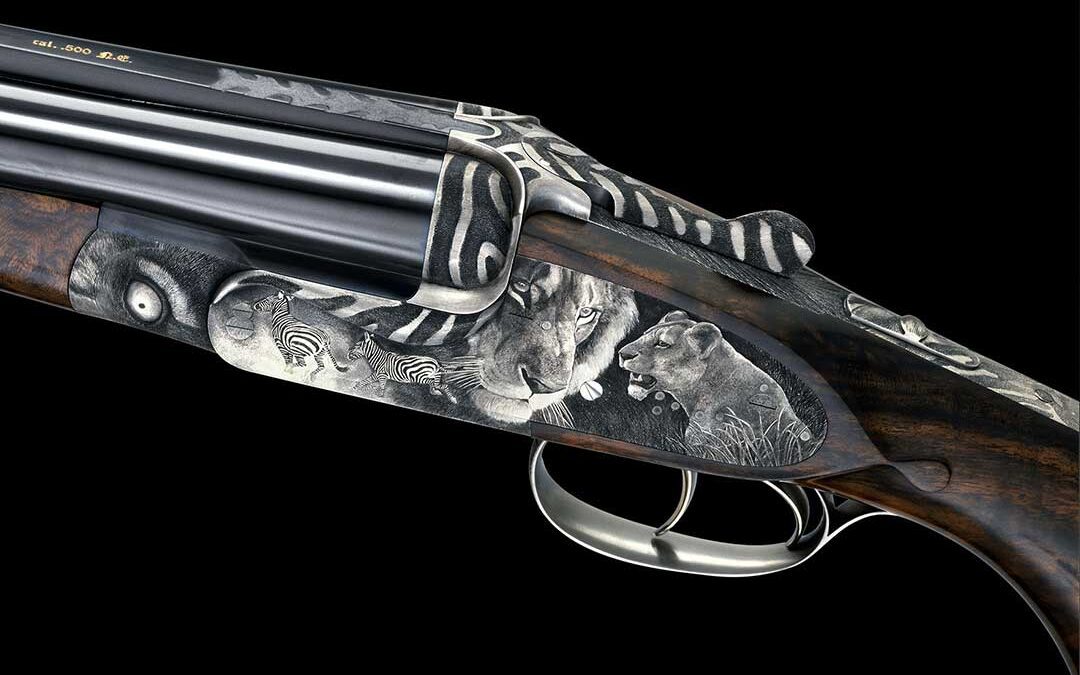Show me a gun and I’ll tell you where it’s from,” is a cliché accommodating more than an element of truth. A sleek sidelock side-by-side with understated fine scroll engraving is likely from London while an over/under accented with fabulous bulino game scenes is probably a product of the Apennine peninsula. A multi-barreled combination “cuckoo clock” gun, with an ornate raised relief stock, fish scale checkering, horn trigger guard and deep mitteleuropean carving is almost certainly from Germany or Austria.
Combination guns are as central to Teutonic hunting traditions as lever-action rifles are to the American West. One Austrian maker with a fresh take on the drilling is Johann Fanzoj who has created smallbore tri-barrel shotguns and four-barrel combination firearms but is also celebrated for its convincing round action clone, a shotgun with greater affiliation with Scotland than central Europe.
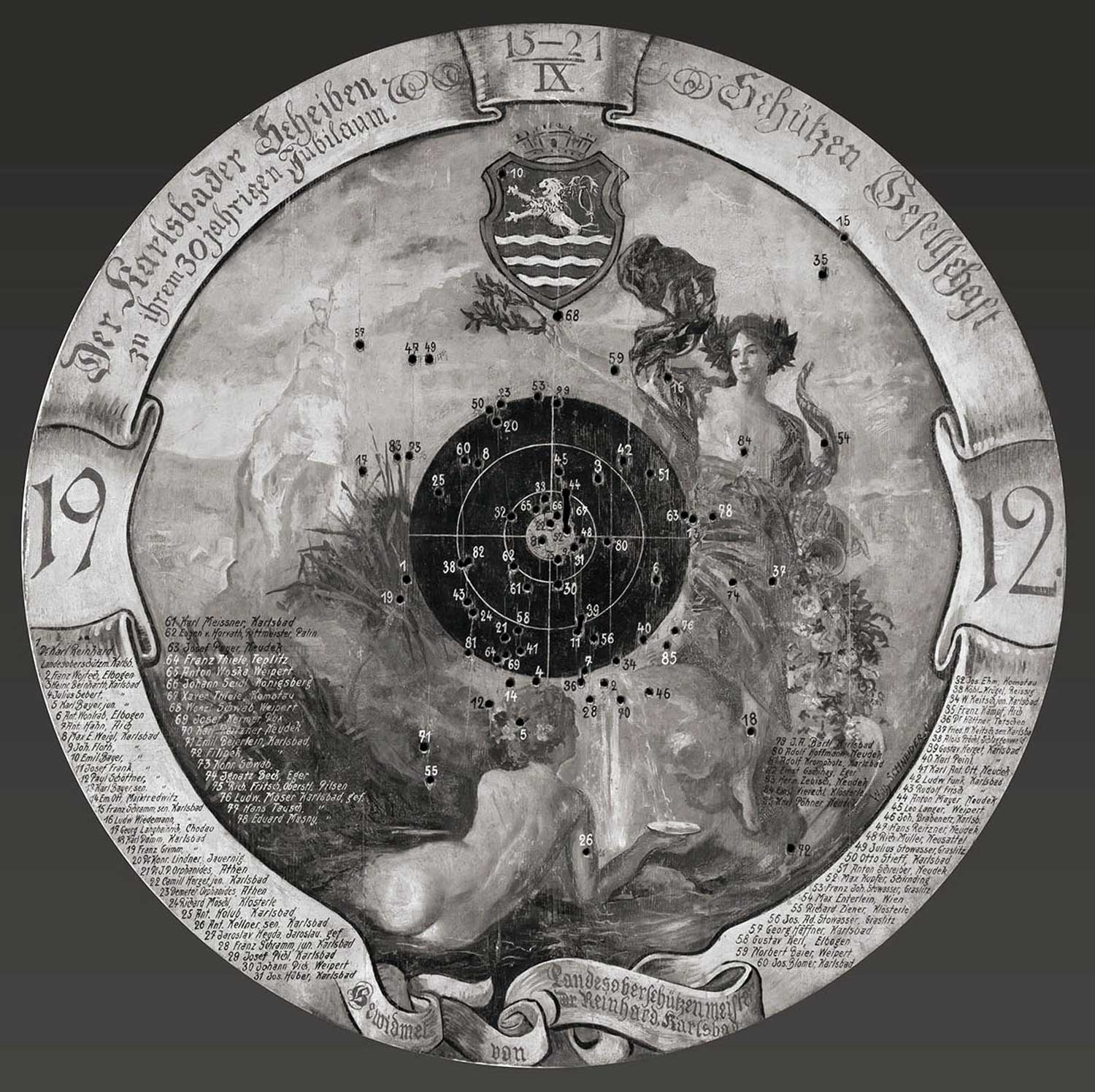
Artistically decorated wooden target, dedicated to the “30-year Jubilee of Imperial & Royal Priviledged Shooter’s Corps of Carlsbad”—the Emperor’s private protective guard.
Fanzoj is part of a centuries-old gunmaking tradition based in Ferlach, Austria. Under Empress Maria Theresa, (1740 –1780) Ferlach’s firearms makers became the main armorers of the Habsburg Monarchy. For more than nine generations, the Fanzoj family has played a role in shaping the town’s destiny. Initially involved in the manufacture of military weapons, Fanzoj today is dedicated to fine luxury firearms for affluent collectors and sportsmen and women.
With firearms, form follows function. During the Austro-Hungarian Empire, a sportsman might as readily encounter furred or feathered game, so a combination gun capable of delivering either shot or bullet offered a simple solution. Because the nature of game varied widely across the Empire, and each species required differing bores and calibers, few off-the-shelf firearms were made to fit the bill. So drillings (German for “triplet”), combination guns that have three barrels, and other multiple-barrel guns were primarily boutique built, reflecting regional game species but also the prestige and personal taste of the burghers who bought them.
Additional barrels require additional locking bolts and traditional Teutonic firearms often come festooned with more locks and bolts than a gun safe. They can appear sturdier than is strictly necessary. This “penchant for overbuilding levies an aesthetic price as well,” as Michael McIntosh observed in his critique of older Austrian and German guns in his book Best Guns. To modern eyes accustomed to svelte sidelocks they can appear blocky, clunky and coarse. Not so with Fanzoj who has refined the concept exponentially.
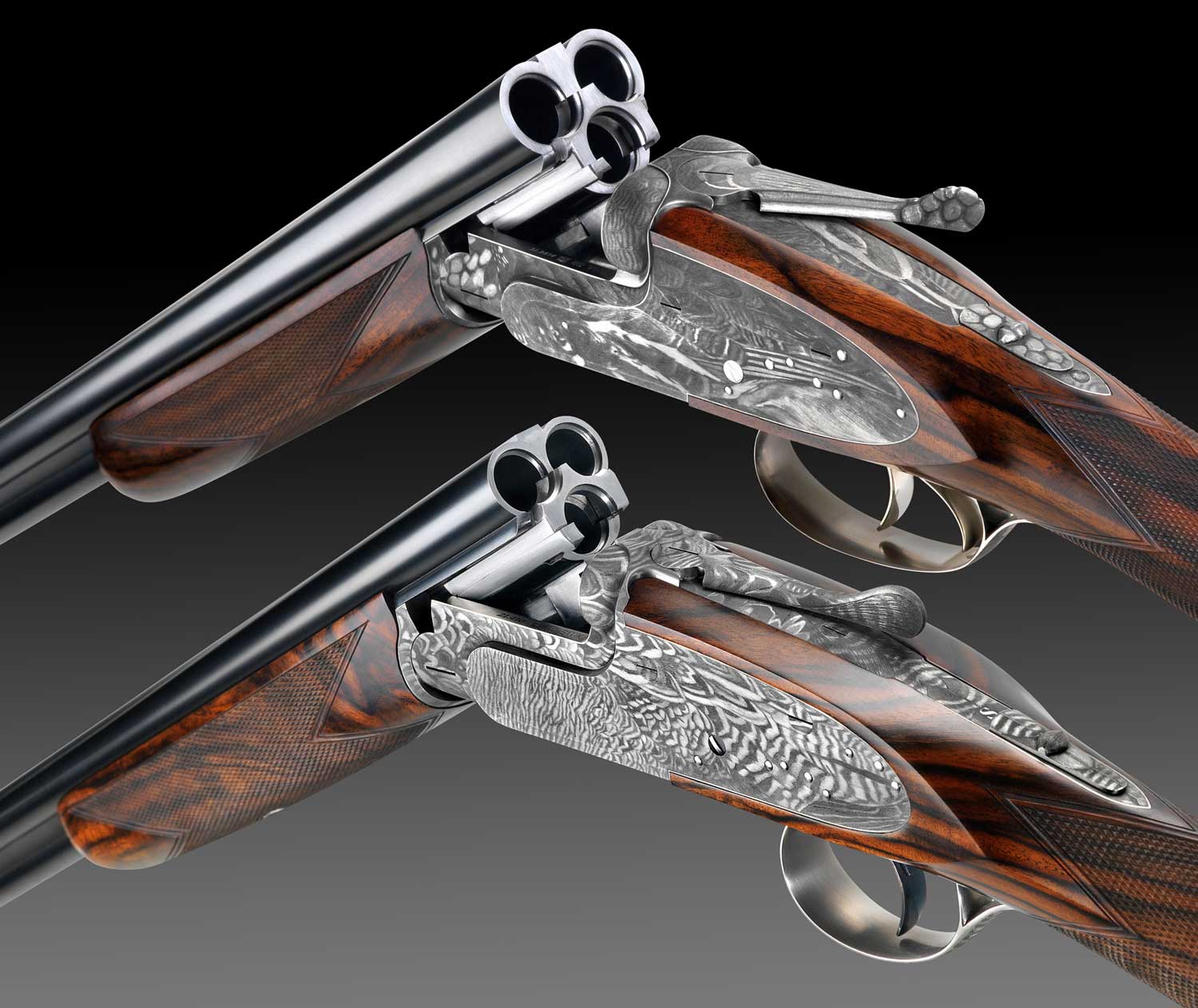
Tri-barreled shotguns in 28-gauge (top) and .410 caliber (bottom).
One reason for Fanzoj’s superiority with multiple barrel guns is that they build them often. Any established fine gunmaker can knock out the odd tri-barrel shotgun, but these one-offs are often heavy and cumbersome. The Fanzoj small bore, tri-barrel, which is available in any number of gauges, is light and balances not unlike a well-made 12-gauge side-by-side with the advantage of an extra shot. The late Marco E. Nobili agreed, comparing Fanzoj’s tri-bore favorably with a semi-auto, adding that it “offers the advantage of different choke for each round.” The barrels on the gun he tested were choked quarter, three-quarters and full, but any combination is available in a bespoke model.
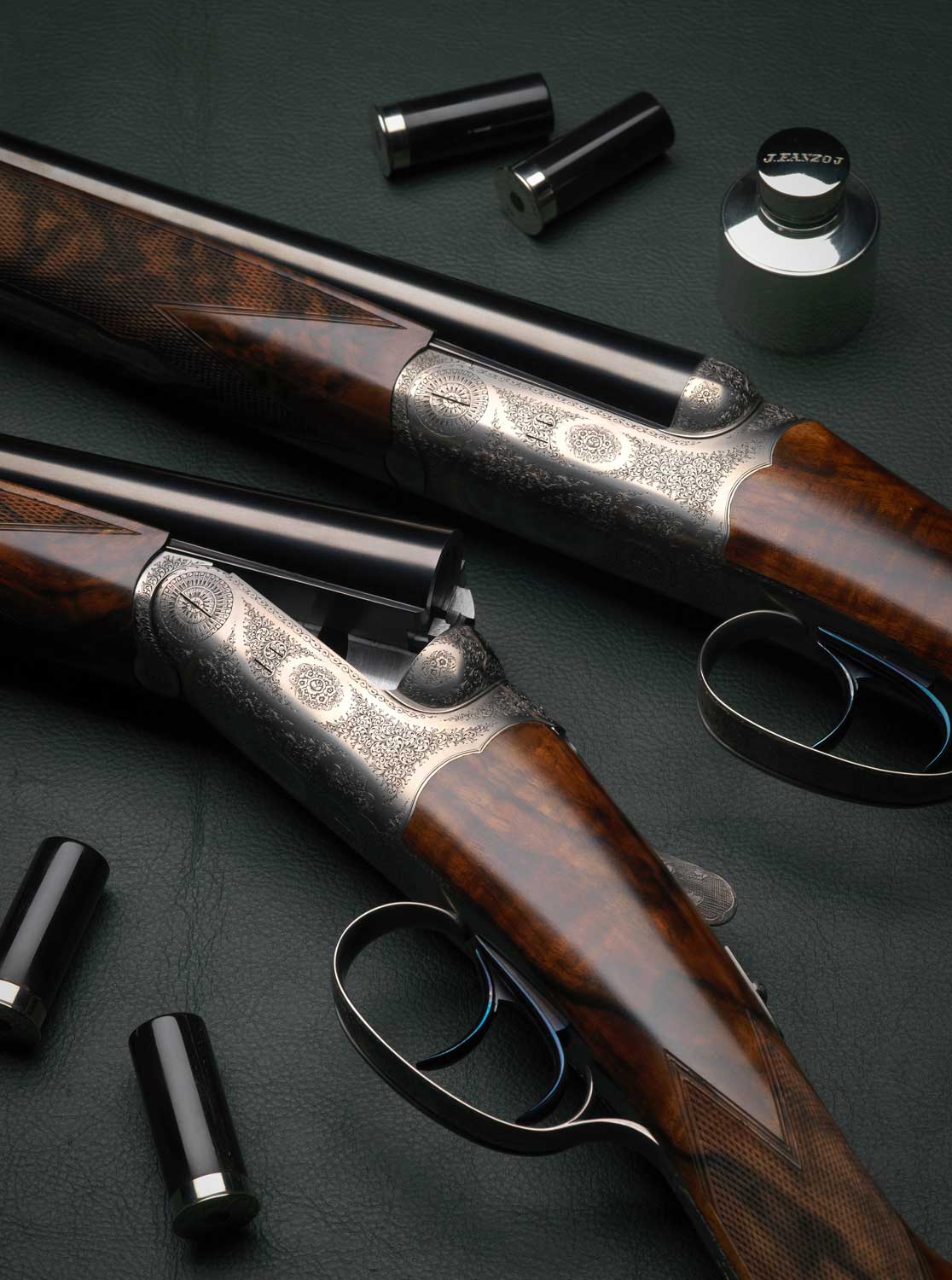
Like much of the worldwide luxury trade, Fanzoj guns are built one-at-a-time and are bespoke. To be bespoke, a gun must be one-of-a-kind rather than the combination of selectable options that define a custom gun. When we speak of a bespoke gun, we are talking about one that is handmade from scratch to the exact specifications of the client. Tri-bores can be made on a traditional blitz action, but today Fanzoj prefers to make them with Holland & Holland-type sidelocks that fire the side-by-side barrels with a trigger plate action accounting for the third barrel.
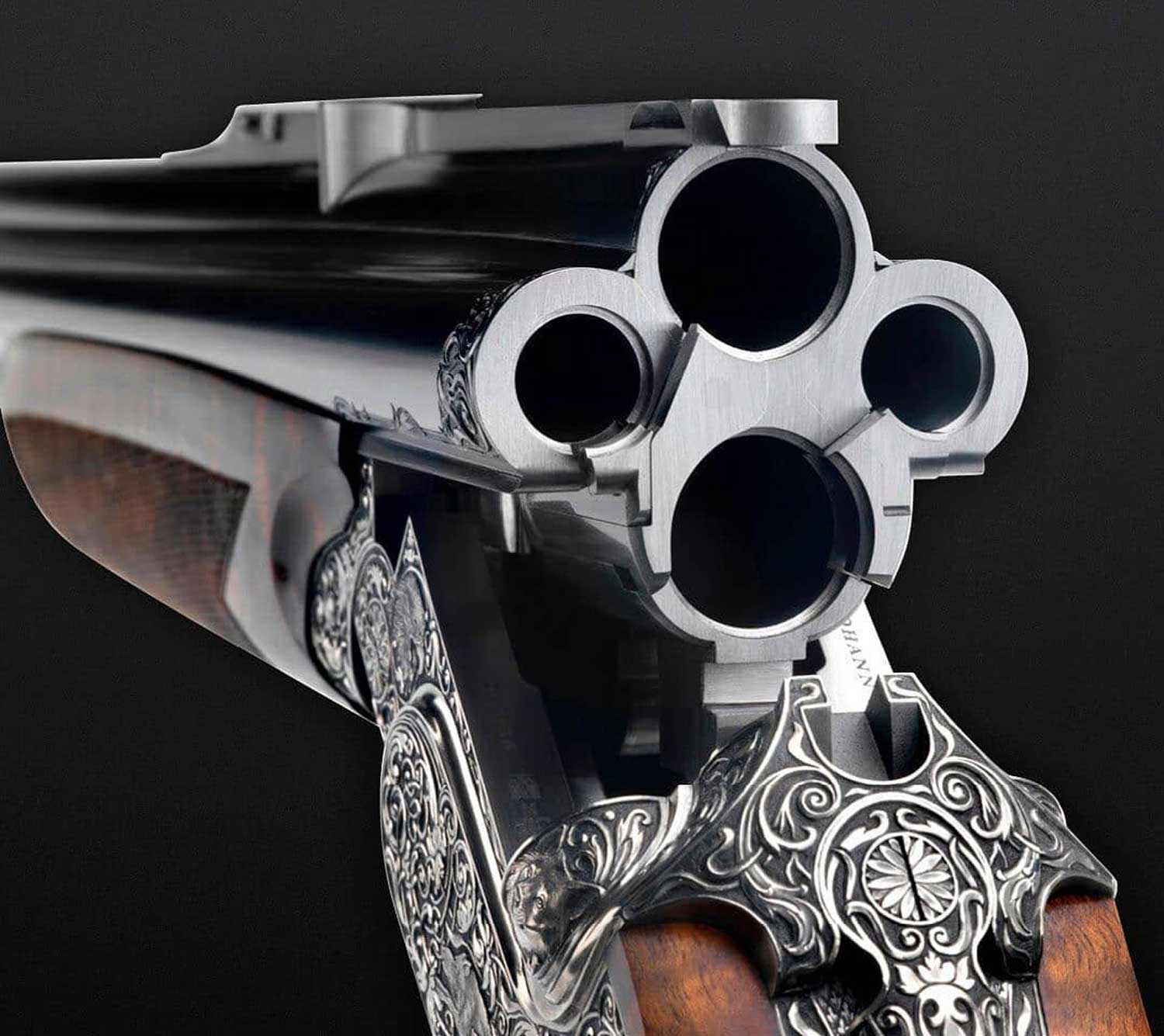
Even more demanding to build is the vierling, a four-barreled combination gun. Fanzoj’s most recent innovation in this area combines an over/under 12-gauge shotgun with a 9.3 x 74R double rifle. The rifle aspect of the mechanism features Holland & Holland types sidelocks with a selector facilitating the use of the shotgun barrels. Rifle and shotgun barrels all feature automatic ejectors.
Perhaps aware of the flak levelled at a previous, clumsier generation of Austrian combination gun, Fanzoj also offers a side-by-side double with a round action almost serpentine in its loveliness. The round-action’s sexy aesthetic is made possible by a trigger plate in which the firing mechanism is secreted onto a larger-than-normal base plate, allowing the body of the gun to be rounded. Slim as a snake, its great merit is in the strength of the bar where no cavities need to be machined to accommodate working parts, permitting the rounding and concentrating the weight between the hands for optimum handling qualities.
Steeped in traditional Austrian gunmaking yet willing to innovate and evolve, Fanzoj has found its place in the international luxury market. Fine quality gunmaking, together with a Teutonic commitment to hard work, will surely mean that Fanzoj will prosper.

